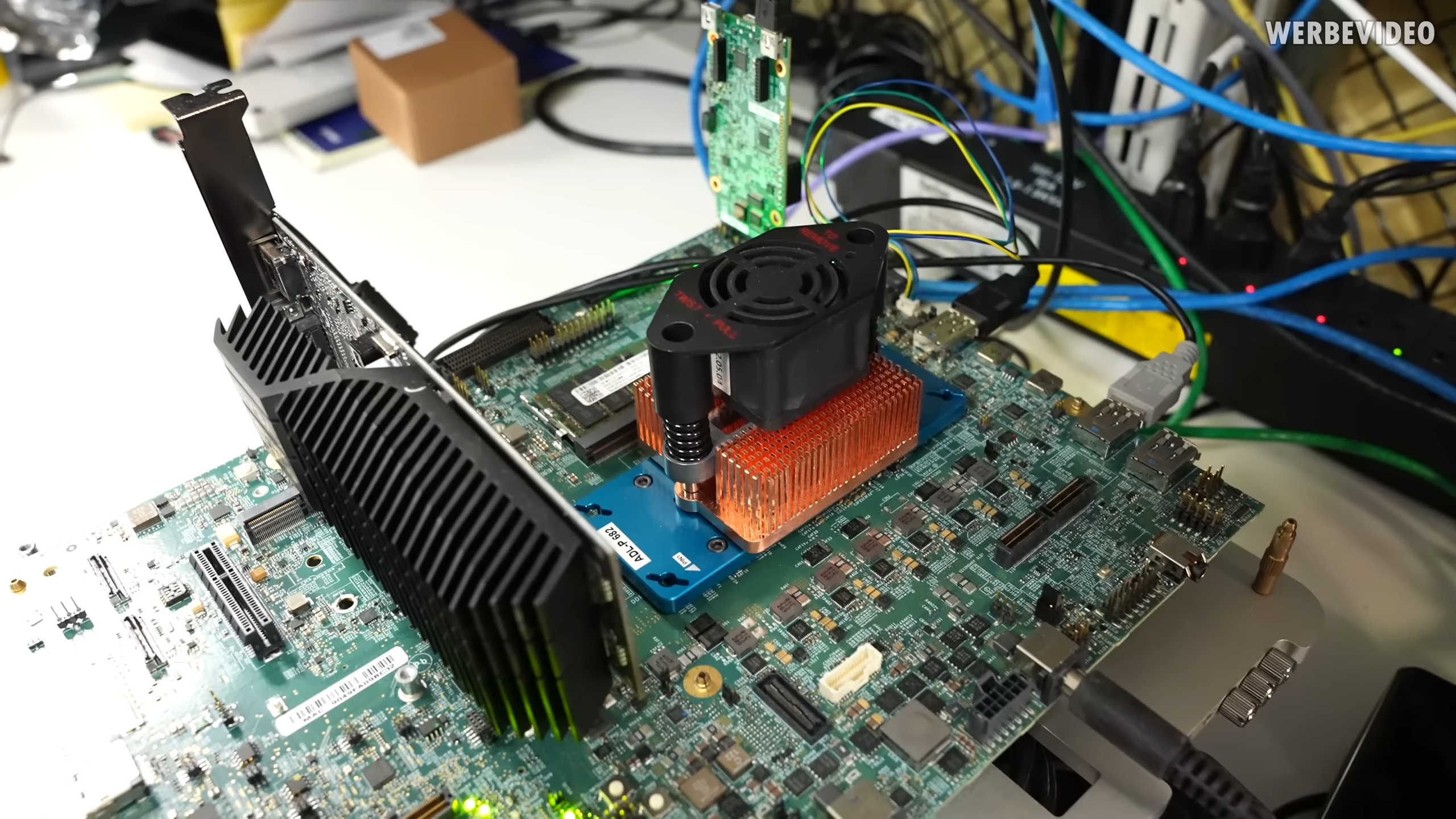Intel's Unreleased Overclocking App Pushes Mobile Core i9-13900HK to 5.8GHz
The chip went all the way to 6GHz before crashing
Overclocking expert der8auer recently published a video where he ventured inside Intel's OC-lab to see how the company tests its unlocked processors. In the video, he showed off a confidential Intel overclocking application - called Real Time Overlocking (ROC), which he used to push a mobile Core i9-13900HK all the way to 5.8GHz stably before the system crashed at 6GHz.
In der8auer's own words, the ROC app is a slimmed-down version of Intel's XTU program. He says he much prefers it over XTU, and the interface is much more intuitive compared to XTU as well.

The application is quite simple. On the main page there's a section called "Per-Core Ratio and AVX Offset," and you have an incredibly simple interface that shows all the cores in the CPU as boxes. The user can then hold a left click and drag the mouse over which cores they want to overclock. To the right, there's a core ratio slider, as well as CPU multiplier offsets for AVX2, AVX512, and TMUL.
Moving over to the tab in the application called "Active-Core Ratio," users gain access to direct control over individual CPU core multipliers, for more fine-tuned overclocking. Next to that is another tab called "V/F Override," which allows the user to control voltage of individual cores, or all the cores at once. You can also change the voltage target mode here, to either be a fixed override voltage or adaptive voltage.
For reference, this is very similar to manually overclocking Intel desktop CPUs. Manual voltage will force the CPU to only run at a pre-defined voltage set by the user, while adaptive voltage only engages a pre-defined user voltage when the CPU runs at its maximum clock speed, improving power consumption at low loads.
These are only a few things the app can manipulate. There are even more capabilities the app has to offer, including manipulation of Intel Turbo Velocity Boost, power limits, and more.


5.8GHz Overclock
Der8auers 5.8GHz overclock was achieved on an Intel engineering motherboard with a simple air cooling solution (hardly the high-end LN2 overclocking gear like we're used to seeing). Despite this, CPU temperatures were excellent, hitting just 65-75 Celsius while overclocking, with a core voltage of almost 1.5 volts.
Get Tom's Hardware's best news and in-depth reviews, straight to your inbox.
The overclock was done entirely in ROC; der8auer stepped up from 4.9GHz to 6GHz in 200MHz increments over the course of just three minutes, with the chip managing to hit 5.8GHz stably before the rig froze at the 6GHz mark.
Nonetheless, this result is still impressive; der8auer says this is the highest frequency he's ever seen out of a mobile chip on any cooling solution to date (including dry ice).

Aaron Klotz is a contributing writer for Tom’s Hardware, covering news related to computer hardware such as CPUs, and graphics cards.